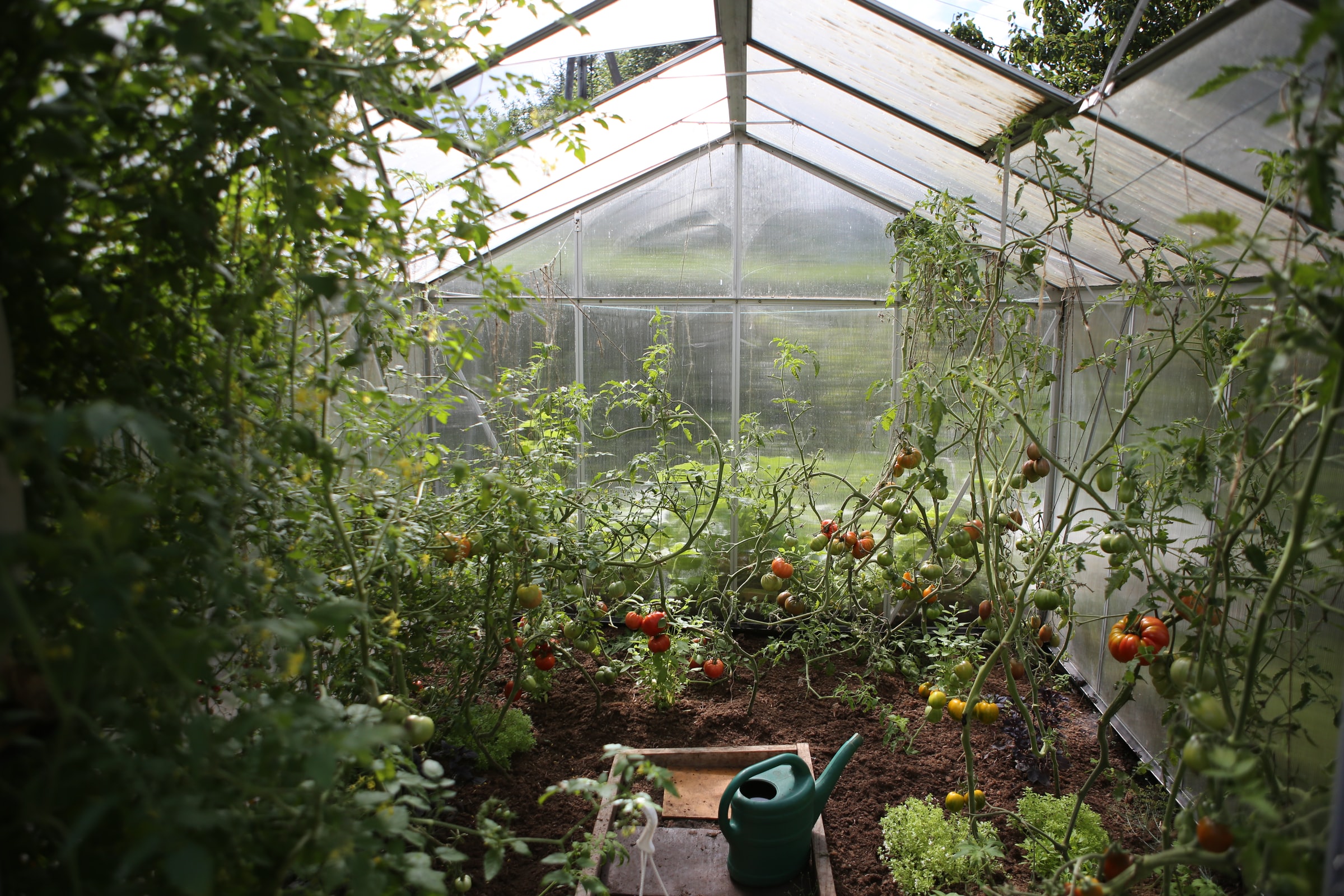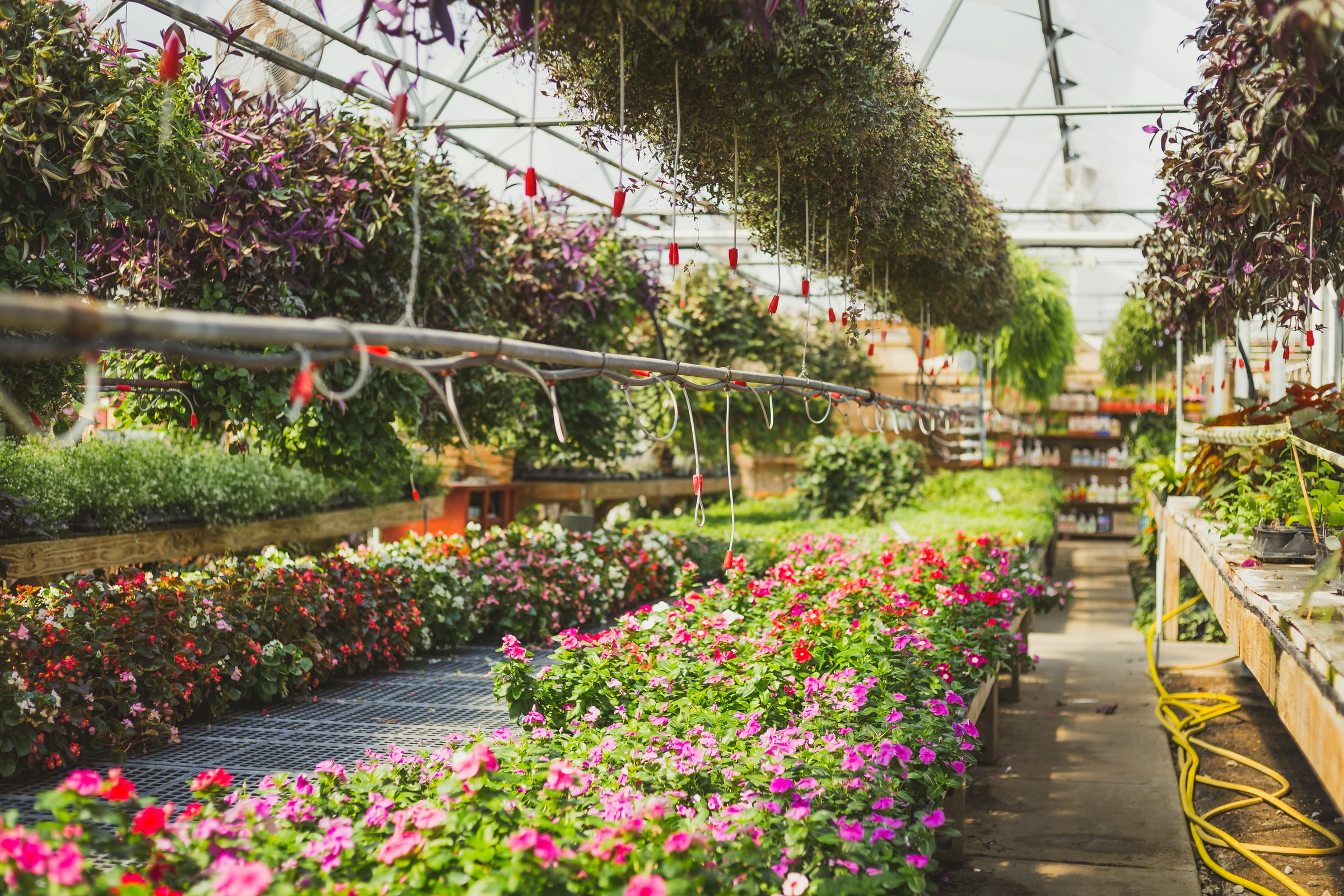Greenhouses can be an ideal space to grow crops in a contained environment. Whether you’re looking to set up a space to grow crops year-round, or you just want an enclosed space to keep them away from animals, greenhouses can be a good way to accomplish a controlled harvest — so long as you don’t overcrowd, and you don’t bite off more than you can chew (until you’re ready).
Contents
- What is best to grow in a greenhouse?
- Do greenhouses need lighting for plants?
- How often should you water greenhouse plants?
- How big should a greenhouse be?

What is best to grow in a greenhouse?
To have a good idea of what to grow in a greenhouse, consider: What can beginners grow in a greenhouse? You won’t want to try overwhelming yourself with too many unlike plants if you’re new to the space or gardening, and it may be best to stick with plants you’re familiar with at first. Those are often plants that thrive indoors and ones that you’d typically grow in your garden, like lettuce, tomatoes, cucumbers, peas, and peppers.
Recommended Videos
Even though the greenhouse will be a contained space, you’ll still need to consider the outdoor conditions when deciding what plants to grow when. You should grow plants that prefer warmer temperatures during the warmer parts of the season and plants that prefer cool temperatures during the cool parts of the season. These will vary depending on what zone you’re in, so be sure to do some research before deciding what to grow first!
Related
- Is it a good idea to use greenhouse grow lights? Here’s what to know
- A beginners guide on what to grow in your greenhouse for a thriving garden
- Small greenhouse tips: 5 ways to make the most of limited space
Do greenhouses need lighting for plants?
Natural light is always the best way to go for a greenhouse, at least during warmer months when there’s plenty of daylight for the plants to thrive from; however, if your greenhouse is set up to be able to grow plants during the cooler months as well, you may consider other greenhouse lighting requirements such as grow lights. You may need grow lights for a portion of the day in order to provide the plants with the proper amount.
Make sure to do your research for which grow lights are best for the environment you’re in and the plants you’re growing. The wrong kind of light can potentially stunt the growth of the plant, which is the opposite effect you want it to have.

How often should you water greenhouse plants?
Like regular gardening, each plant in the greenhouse will have different watering preferences. You’ll want to treat them similar to your indoor houseplants; they won’t need to be watered every single day. There are plants and vegetables that need their soil to dry out between watering to prevent drowning or rot. It all depends on the climate they originated from. A good rule of thumb for most plants is to wait to water until the first inch or two of the soil is dry.
Make sure when you water, though, that you do so thoroughly. You should water them until it starts to drain from the bottom of the container, then give the soils some time to dry out. It’s also important to keep a regular watering schedule, especially when you’re growing fruits and vegetables. If the soil dries out too much between watering, the production of the vegetables could decrease, and your harvest will be smaller than you had initially imagined.
How big should a greenhouse be?
The key thing to keep in mind when deciding on a greenhouse is that your plants will grow. They’ll grow from starters into sprouts that need to be potted, and possibly outgrow that pot and need a new one. So try not to overestimate when you’re starting out. You’d hate to buy too many seeds and have more plants than you know what to do with.
The recommended minimum size for a greenhouse is 10 feet x 10 feet if you intend to grow a decent amount of plants. However, if you’re looking for something smaller to start out and don’t want to grow too much off the bat, you can always start with one as small as 6 feet x 6 feet. It won’t have a lot of space, but it will house those tomatoes and peppers until you can get a handle on how greenhouse gardening works.
Remember to keep it simple your first time around. You’ll have an easy time adjusting if you work with plants you’re familiar with in an unfamiliar environment instead of attempting to grow unfamiliar plants at the same time. Basic plant care is a must when growing in a greenhouse, so be sure to read up on the ones you intend to get.
Editors' Recommendations
- 6 common greenhouse plants even a beginner can’t kill
- The ideal greenhouse temperature and humidity settings for every season
- What you need to know about light deprivation (or ‘light dep’) greenhouses and how they work
- Do you need a fence for your garden? What you need to know before deciding
- 3 of the best solar garden lights for a bright and eco-friendly yard